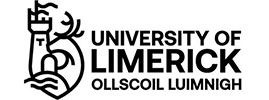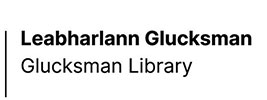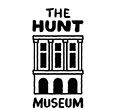The Irish Republican Brotherhood (IRB) was a revolutionary secret society founded in Dublin on St. Patrick’s Day, 1858. The IRB along with its Fenian Brotherood sister organisation in the United States of America, espoused the core radical principles of the United Irishmen and later Young Ireland movement. The IRB demanded the establishment of an independent and sovereign Irish Republic based on civil and religious equality.
The misfired 1867 Fenian uprising was the new organization’s first large scale aggression in Ireland. Fenianism was particularly strong in Limerick during the period where John Daly emerged as a key leader. After a period in exile in America, Daly returned home to reinvigorate the national IRB in Ireland. He was deeply involved in the Amnesty Movement which campaigned for the release of Fenian prisoners, many of whom were Limerick natives detained in dreadful conditions.
Daly experienced the brutality of the British penal system when arrested during the Fenian Dynamite Campaign in England. Directed by Clan na Gael, the rebranded Fenian Brotherhood in America, the 1880s bombing offensive was a sophisticated transatlantic conspiracy. Daly was sentenced to penal servitude in Chatham where he and other republicans, not least Tom Clarke, underwent notoriously harsh confinement. Several prisoners died or became deranged.
The IRB remained active in Limerick in the advent of the new century and exerted influence across the entire region. Members infiltrated and often virtually controlled cultural organisations such as the Gaelic League and Gaelic Athletic Association. More forthright activity in rural areas was centred on the campaign to resist landlord tyranny in the post-Famine environment. Evictions during the ‘Famine’ frequently led to death from exposure and disease, a memory that served to remind survivors of the inequitable political system run from London. Belated changes to the regulation of local government ensured that John Daly, notorious to some and hero to many, became Mayor of Limerick City on three occasions after his release from prison. He personified Fenianism as much as John Devoy and Jeremiah O’Donovan Rossa in the USA. His spectacular elevation to civic office was indicative of the appeal of the republican message in the sector.
Tom Clarke was released from prison in 1898 as the centenary of the 1798 Rebellion was being celebrated throughout the global Irish diaspora. Mayor Daly arranged to have the Freedom of the City bestowed upon Clarke as a mark of respect for his contribution to the pursuit of Irish independence. Clarke, in fact, had been inducted into the IRB in Tyrone by Daly in his youth. When in Limerick Clarke became acquainted with Daly’s niece, Kathleen whom he later married in America.
While in New York, Clarke rejoined Clan na Gael and became highly regarded among its leadership. He was closely associated with prominent leader John Devoy, a Kildare republican who dedicated his life to destroying the British Empire in Ireland. Their personal and professional relationship precipitated a period of closer bonds between CNG and the IRB manifested during Ireland’s revolutionary period, 1912-1923.
Tom Clarke returned from America in December 1907 having acquired US citizenship and a property in Suffolk County, Long Island, New York. This proved a catalyst for the reinvigoration of the IRB arising from his impeccable CNG credentials. A new generation of Fenians emerged in Ireland, such as Daly family friend, Seán MacDiarmada, and they promptly imposed their militancy on the aging upper political structures of the IRB.
The Third Irish Home Rule Bill was introduced in Westminster in 1912 offering a Dublin assembly limited self-governance within the United Kingdom framework. However, it was rejected by the pro-British Unionist minority who formed the paramilitary Ulster Volunteer Force to resist the Bill’s ratification. Senior officers in the military were encouraged by Conservative Party ‘Empire Loyalists’ to threaten ‘mutiny’ if power was devolved to a Dublin forum. This encouraged the IRB to sponsor the establishment of the much larger Irish Volunteers (Oglaigh na hEireann) in Dublin in November 1913. The IRB moved quickly to place its members in influential positions among the leadership.
The Limerick branch of the Irish Volunteers were founded in the Athenaeum on 25 January 1914 in the presence of Patrick Pearse and Roger Casement, two of the most articulate and committed republican acolytes of the new generation. They located their offices at No 1 Hartstonge Street. The IRB was strongly represented at the initial meeting in the city with James Leddan, George Clancy and Michael O’Callaghan among the panel. Members of rugby and rowing clubs were well represented, as were local trade unionists and members of the Ancient Order of Hibernians. The Women’s nationalist organisation Cuman na mBan was established in Limerick on 5 June 1914 and was directed by the Daly sisters. In Dublin, Limerick natives and IRB members commanded significant roles in the Volunteers. Ned Daly, Kathleen’s brother, and Athea’s Con Colbert were highly regarded, as was Seán Heuston who had strong county connections through the Na Fianna Eireann republican scouts. Both Colbert and Heuston were drill instructors at Pearse’s St. Enda’s school in Rathfarnham, Dublin. As the Irish Volunteers grew in strength in 1914, they made a significant declaration of intent by illegally landing rifles at Howth and Kilcoole in July/ August. The elaborate gun-running operation had a strong Limerick dimension with Mary Spring Rice and her cousins Conor and Kitty O’Brien instrumental in the successful voyages of the Asgard and the Kelpie.
Public focus in Ireland was deflected from the national agenda following the outbreak of war in Europe in late July and early August 1914. The constitutionalist Irish Parliamentary Party leader, John Redmond, had assumed control of the Irish Volunteers in June 1914 by imposing his nominees on its Executive under threat of splitting the movement. Home Rule was due for ratification in September but war dictated that it was delayed for the duration of the conflict. This evidently prompted Redmond to call on his followers to enlist in the Imperial forces in the hope that it would cement Ireland’s entitlement to Home Rule. The Irish Volunteers split in consequence with the majority ‘National Volunteers’ endorsing Redmond. Tens of thousands enlisted. Those committed to the republican project sided with Eoin MacNeill, nominal Chief of Staff of the 10-15% rump. Significantly, the IRB dominated the leadership of the remaining Irish Volunteers and continued to recruit with a view to mounting an insurrection at a promising opportunity.
The followers of MacNeill were proportionally stronger in Limerick than most other areas, and although lesser in numbers than the Redmondites, retained control of the major arms caches. On Whit Sunday, 23 May 1915, a major Irish Volunteer parade composed of units from Limerick, Dublin, Cork and Tipperary was held in the Limerick City with Patrick Pearse and Robert Montieth as guests of honour. The demonstration due units from several counties in a major show of force even if marred by crowd hostility in certain quarters of the city by political opponents and civilians with familial links to the British Army.
Later in 1915, the Irish Volunteers displayed their organisational capabilities by mounting the Dublin funeral of the celebrated Fenian icon Jeremiah O’Donovan Rossa. Pearse’s impassioned oration at Rossa’s graveside on 1 August 1915, where he extolled a continuation of the Fenian tradition, was effectively a declaration of war on the British presence in Ireland. Both Tom Clarke and Ned Daly were key figures in Rossa’s funeral arrangements. Kathleen Clarke assisted by helping manage the transport of Volunteers to and from the capital. The hugely successful event was filmed by British Pathe news, as well as by an Irish-American company. The private US footage was screened in America after the 1916 Rising.
Leading members of the IRB men, including Clarke, Pearse and MacDiarmada, formed the highly secret Military Council by May 1915 in order to direct the rising of the Irish Volunteers at Easter 1916. Hiberno-Scottish labour and socialist leader James Connolly was co-opted in January 1916 along with his small but well trained Irish Citizen Army. The Military Council withheld their plans from MacNeill and others regarded as overly cautious. In the course of 1915 and early 1916 the Irish Volunteers mounted a series of training camps across the country in order to practise mobilization and deployment. Limerick units participated in the ‘Shannon Camp’ which involved interaction with comrades from Galway and further afield.
In the weeks prior to the Rising, Roger Casement oversaw a German shipment to Ireland of almost 30,000 rifles and 1,000,000 rounds of ammunition. Limited quantities of machineguns were also procured. The gun-running was organised by the IRB and CNG. The cargo was due to be landed at Fenit Harbour, County Kerry, immediately before the mobilization. Limerick City’s docks were also mooted as a potential landing point at a late stage. However, due to miscommunications and bad luck the Aud failed to land its cargo and the ship was eventually scuttled following its interception by British warships. Royal Navy cryptanalysts had broken the German naval code and knew the Aud was en route to the Kerry coast. An attempt to acquire a powerful radio transmitted when one of two carloads of Volunteers accidently drove off Ballykissane Pier into the River Laune at Kilorglin. The driver returned safely to Limerick. Meanwhile, a dejected and ill Casement was arrested near Banna Strand having been landed by the U-19 submarine. Sensing a crisis, the Royal Irish Constabulary arrested leading Kerry IRB man Austin Stack and several of his close associates.
The Irish Volunteers in Limerick were an integral part of the plans for dispersing the Aud’s arms throughout Ireland. Precise amounts were due to be retained locally and others dispatched by rail and road to comrades in the south and west. Included in orders issued by Pearse to Michael Colivet were detailed contingencies for military actions in the Limerick area as part of the countrywide effort. On learning the fate of the weapons, MacNeill ordered all Volunteers not to turn out on Easter Sunday (23 April 1916), the day the Military Council had set for the start of the Rising. The countermanding order along with the loss of the precious cargo disconcerted the Limerick Volunteers who remained unsure of their official orders on the eve of the Rising. At least seven conflicting sets of orders reached Limerick City from Headquarters in Dublin. One was delivered by Michael ‘The’ O’Rahilly, Quartermaster General of the Irish Volunteers. Unsure of how to proceed, Colivet disobeyed commands to remain stood down on Easter Sunday and proceeded with a route march to Batt Laffan’s farm in the Kilonan area. Eventually a message from the Daly family induced them to return to the Fianna Hall off Thomas Street.
The determination of Clarke, Pearse and MacDiarmada to advance the republican cause ensured that the Easter Rising commenced in Dublin at 12.00 PM on 24 April 1916. Having taken the complacent authorities by surprise, Volunteers seized control of strategic buildings in the city centre while numerous detachments secured an outer defensive ring. The Military Council established headquarters in the General Post Office on O’Connell street where Pearse read aloud the Proclamation which declared the Irish Republic. The international diplomatic recognition sought by the leadership did not eventuate but the military aspect of the Rising was more successful than anticipated.
Limerick natives and associates were deeply involved in the often bitter fighting in Dublin during Easter week. Commandant Ned Daly led the 1st Battalion’s Four Courts garrison where some of the most prolonged and intensive combat occurred. Eamon de Valera, a man with strong Limerick family background, was Commandant of the Boland’s Mills garrison on the south side of Dublin City. Con Colbert headed a detachment at Watkin’s Brewery and later fought at nearby Marrowbone Lane. Sean Heuston, similarly, commanded a small force at the Mendicity Institute. Proclamation signatories Clarke and MacDiarmada remained in the GPO as members of the Provisional Government.
Outside Dublin, fighting was sporadic with Meath, Galway and Wexford witnessing the more serious engagements. Limerick Volunteers partially turned out for manoeuvres on Easter Sunday but ultimately decided against attacking local military forces. They reluctantly accepted MacNeill’s countermanding order as that of the legitimate Chief of Staff, and hesitated at a time when numerous contradictory instructions were arriving from Dublin. Many believed that the national effort was doomed due to the loss of the Aud and that it was better to await a more favourable opportunity to strike for Irish freedom.
The military phase of the Easter Rising lasted from 24 until 29 April 1916. Central Dublin was heavily shelled by British artillery, reducing much of the commercial heart of the capital to rubble. Following the surrender ordered by Pearse, The British reacted swiftly and ruthlessly, executing fourteen Volunteer leaders in Dublin. Pearse, Clarke and Tipperary’s Thomas MacDonagh were the first three shot in Kilmainham Prison. They were followed by MacDiarmada and the other signatories of the Proclamation, as well as Thomas Kent in Cork. Among those executed were Ned Daly, Con Colbert and Sean Heuston. Roger Casement was later executed in England for his part in the failed gun-running and associations with Britain’s German enemy. Many others were arrested and interned indefinitely in British detention facilities.
The cessation of hostilities in Dublin allowed the British forces to pressure the Volunteers in Limerick to surrender part of their arms cache. Under duress commanding officer Michael Colivet marched his men to the old Town Hall in Limerick City to hand over a piecemeal portion of their weaponry. This action along with Limerick’s inactivity during the Rising briefly stigmatized of the Limerick Volunteers. A similar situation pertained in Cork City but Volunteer leaders of both Munster centres were exonerated of all blame by an Irish Republican Army inquiry in 1917. John Daly died in June 1916. His influence and legacy was marked by the volume of good wishes the family received from organisations and private individuals. His death and that of many comrades in the Rising did not signal the end of another phase of Irish militancy. In fact, the events of Easter Week were a prime catalyst in sparking the War of Independence in January 1919.
By Dr Ruan O’Donnell
Senior Lecturer, Dept. of History at the University of Limerick




